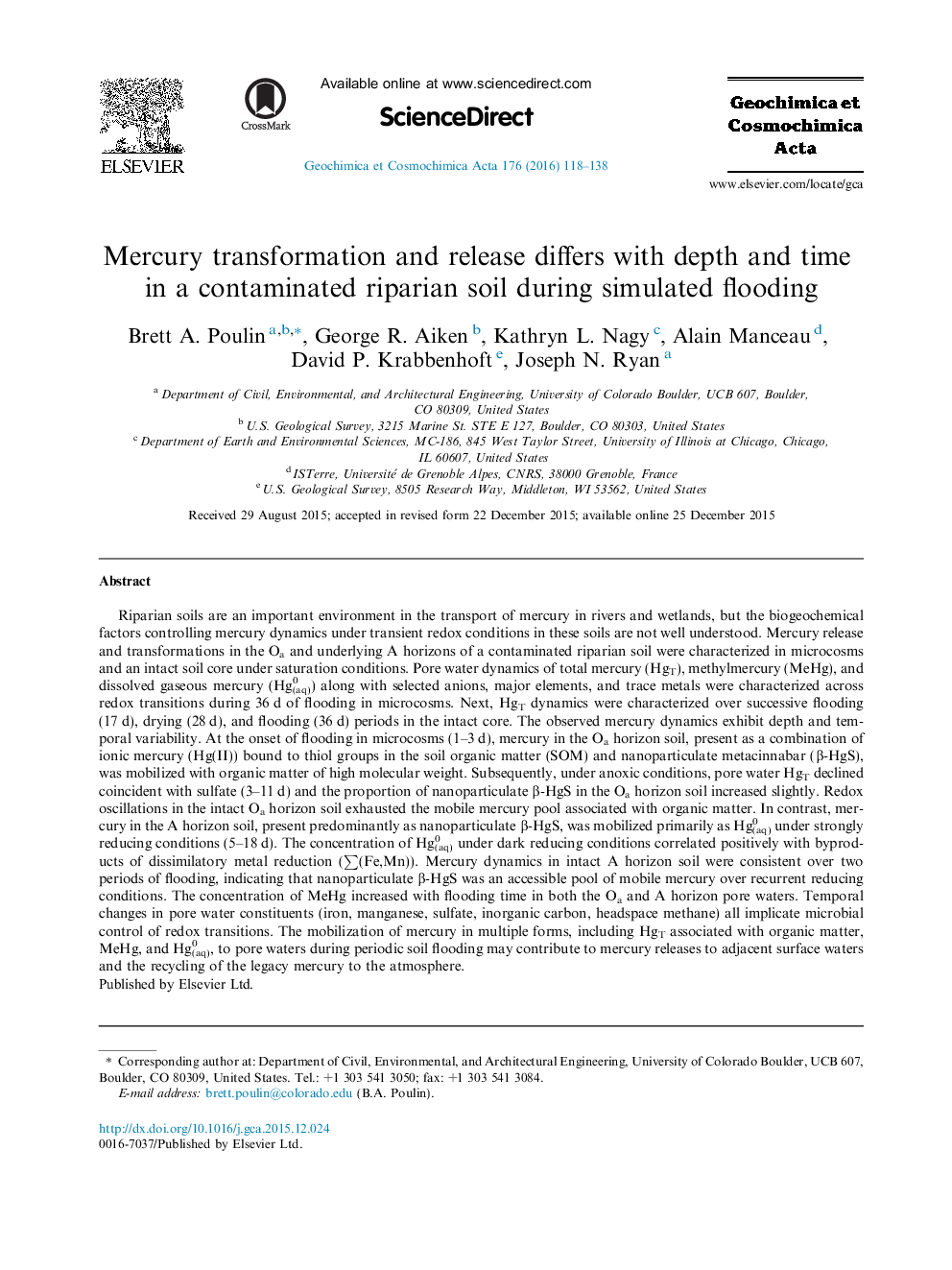| کد مقاله | کد نشریه | سال انتشار | مقاله انگلیسی | نسخه تمام متن |
|---|---|---|---|---|
| 6437614 | 1637981 | 2016 | 21 صفحه PDF | دانلود رایگان |
Riparian soils are an important environment in the transport of mercury in rivers and wetlands, but the biogeochemical factors controlling mercury dynamics under transient redox conditions in these soils are not well understood. Mercury release and transformations in the Oa and underlying A horizons of a contaminated riparian soil were characterized in microcosms and an intact soil core under saturation conditions. Pore water dynamics of total mercury (HgT), methylmercury (MeHg), and dissolved gaseous mercury (Hg0(aq)) along with selected anions, major elements, and trace metals were characterized across redox transitions during 36 d of flooding in microcosms. Next, HgT dynamics were characterized over successive flooding (17 d), drying (28 d), and flooding (36 d) periods in the intact core. The observed mercury dynamics exhibit depth and temporal variability. At the onset of flooding in microcosms (1-3 d), mercury in the Oa horizon soil, present as a combination of ionic mercury (Hg(II)) bound to thiol groups in the soil organic matter (SOM) and nanoparticulate metacinnabar (β-HgS), was mobilized with organic matter of high molecular weight. Subsequently, under anoxic conditions, pore water HgT declined coincident with sulfate (3-11 d) and the proportion of nanoparticulate β-HgS in the Oa horizon soil increased slightly. Redox oscillations in the intact Oa horizon soil exhausted the mobile mercury pool associated with organic matter. In contrast, mercury in the A horizon soil, present predominantly as nanoparticulate β-HgS, was mobilized primarily as Hg0(aq) under strongly reducing conditions (5-18 d). The concentration of Hg0(aq) under dark reducing conditions correlated positively with byproducts of dissimilatory metal reduction (â(Fe,Mn)). Mercury dynamics in intact A horizon soil were consistent over two periods of flooding, indicating that nanoparticulate β-HgS was an accessible pool of mobile mercury over recurrent reducing conditions. The concentration of MeHg increased with flooding time in both the Oa and A horizon pore waters. Temporal changes in pore water constituents (iron, manganese, sulfate, inorganic carbon, headspace methane) all implicate microbial control of redox transitions. The mobilization of mercury in multiple forms, including HgT associated with organic matter, MeHg, and Hg0(aq), to pore waters during periodic soil flooding may contribute to mercury releases to adjacent surface waters and the recycling of the legacy mercury to the atmosphere.
Journal: Geochimica et Cosmochimica Acta - Volume 176, 1 March 2016, Pages 118-138
